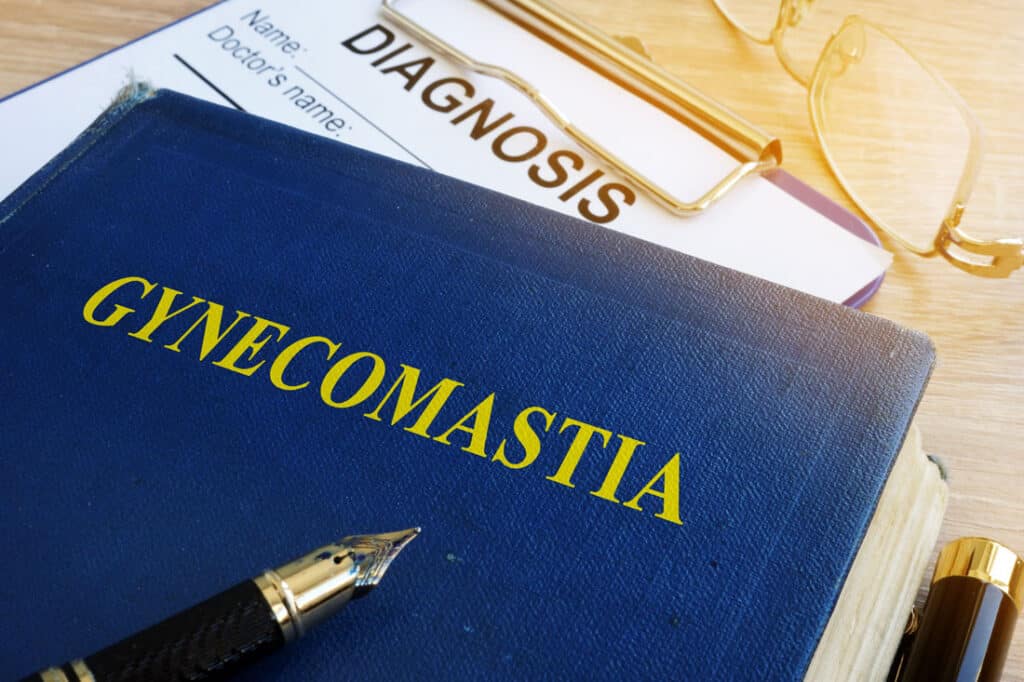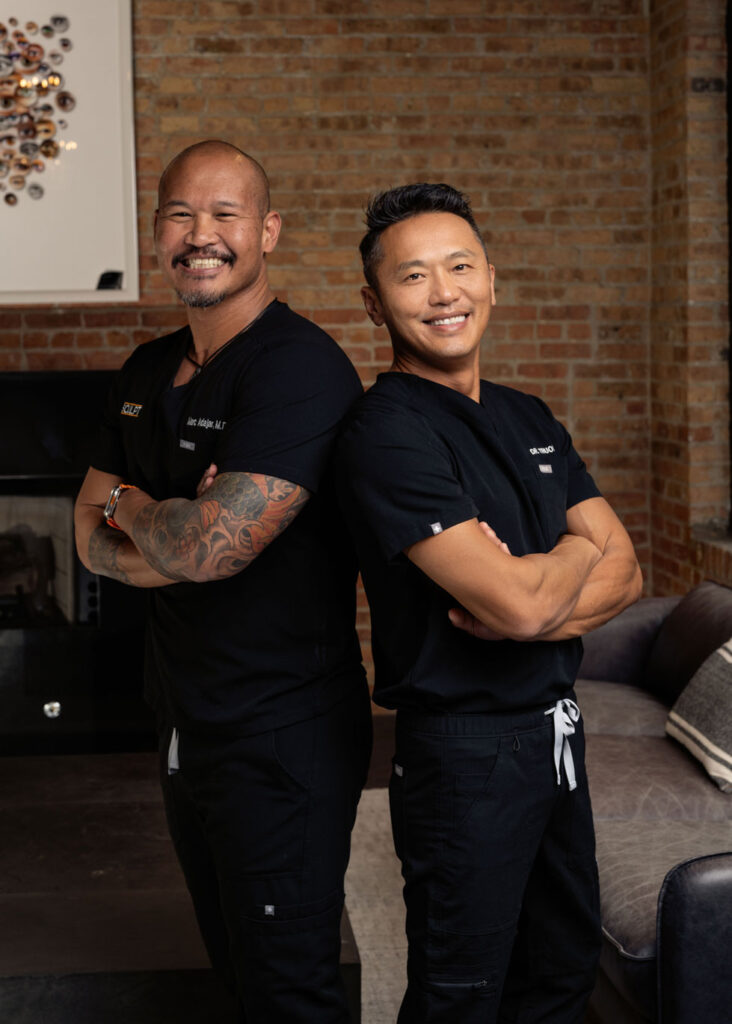Non-Surgical Gynecomastia Treatments

Non-Surgical Gynecomastia Treatments: What Really Works?
Gynecomastia is a medical condition seen in males characterized by the abnormal enlargement of the breast glands. There are two common classifications for gynecomastia:
Pathologic gynecomastia, on the other hand, can be caused by several factors. It usually progresses rapidly, and requires a deliberate medical treatment plan.
Physiologic gynecomastia is temporary, occurring as a result of hormonal imbalance during puberty, and usually resolves in most cases without treatment.
Surgery isn’t the only option for treating non-surgical gynecomastia. Here are some effective non-surgical gynecomastia treatments and take control of your condition.
In order to treat gynecomastia, it is important to make sure other breast problems aren’t present first. There are other conditions such as pseudogynecomastia and breast cancer, that can look like gynecomastia but have different non-surgical gynecomastia treatments. These other conditions can be diagnosed usually with an ultrasound of the breast.
Men with gynecomastia can suffer from low self esteem, depression, anxiety, and a perceived sense of unwholesomeness. Therefore, treatment of gynecomastia can not only be therapeutic physically, but mentally as well. Once gynecomastia has been present for more than one year, it often becomes permanent due to the development of fibrous breast tissue within the gland. However, if non-operative therapy is started early enough, the gynecomastia can become smaller or become unnoticeable.

Analyze your medical history
The first step is for your physician to review possible causes or triggers for the development of gynecomastia. Prescription medication use, steroids, excessive alcohol intake, and recreational substance abuse are the leading triggers of abnormal breast development in males. If detected early, the patient is instructed to avoid these triggers, and any medications that are causing gynecomastia is substituted for an alternative medication without the gynecomastia-causing side effects. Once these changes are made, the size of the gynecomastia is closely monitored. If the gynecomastia shrinks or disappears, no further treatment is required.
Treat any Underlying Medical Conditions
There are several medical conditions that can cause hormonal imbalances leading to gynecomastia. Cirrhosis, hyperthyroidism, malnutrition, and adrenal tumors are medical conditions that can cause gynecomastia. Occasionally, once the underlying medical disease is treated the hormonal imbalances normalize and the gynecomastia can subside.
Prescription medications:
Prescription medication is often an effective treatment for non-surgical gynecomastia, especially when started early in the diagnosis. There are several types of medications that can be used to treat gynecomastia.
- Estrogen receptor antagonist medications: Estrogen receptor antagonist medications have been proven by several clinical studies to be effective in reducing the effect of estrogen in males. Excess estrogen in men is the main cause for the development for gynecomastia. Estrogen receptor antagonists work by blocking the estrogen receptors of the breast gland, making it insensitive to the effects of the surrounding estrogen. Tamoxifen, a potent estrogen receptor antagonist, is used as a first-line drug in the treatment non-surgical gynecomastia as it has little side effects while significantly reducing the pain, size, and other symptoms of gynecomastia.
- Aromatase inhibitors: Aromatase inhibitors are medications that block the production of estrogen by stopping the enzyme that makes it (aromatase). The most widely used drug in this class is Anastrozole. This medication is particularly useful in gynecomastia cases that start in puberty because of the high level of estrogen (created from testosterone by the aromatase enzyme), testosterone replacement therapy, or in cases caused by the excess level of aromatase such as obesity (the aromatase enzyme is mainly found in fat cells).
- Hormone therapy: In adolescent males with low testosterone, androgens as direct hormone replacement therapy can be used for gynecomastia patients. Androgens will increase the level of testosterone which leads to the expression of masculine traits. This can help decrease the presence of any feminine traits such as gynecomastia. Danazol and Dihydrotestosterone are the common androgens used for the treatment of gynecomastia.
- CoolSculpting: CoolSculpting has been described as a potential treatment of gynecomastia. This method freezes fat deposits around the breast region using especially a designed machine. The machine consists of a small paddle infused with a cooling element that supplies low temperatures at extreme points to the selected region of the breast. The intense cold breaks down the cells of the breast tissue and eliminates fats deposits underneath the skin. After several sessions, the breast tissue slowly shrink, and a decrease in breast size is noticed. The technique is painless and so far with no apparent side effects. However, Coolsculpting is considered experimental for the treatment of gynecomastia and long-term effects have not been studied yet.
- Laser-Assisted Lipolysis: This minimally invasive technique involves the localized use of diode laser with a predetermined wavelength on the fatty cells and fibrous tissues around the breast region. This technique has been proved by various clinical studies to contract enlarged glands, reduce areola size, and generally reduce breast volume. In 2010, The American Journal of Cosmetic Surgery published a report confirming the potential benefits of laser-assisted lipolysis as a non-surgical method of treating gynecomastia. This technique is safe, reliable, and provides the additional benefit of skin tightening and chest shape improvement. Like CoolSculpting, Laser-assisted Lipolysis is not a standard accepted treatment for gynecomastia and more research has to be done.
In summary, there are several options that will likely need to be used at the same time in order to treat gynecomastia without surgery. If started early and aggressively, the success rate can be high.
If you are interested in learning more about your gynecomastia treatment options, contact us for a complimentary consultation today.

GET YOUR COMPLIMENTARY ANALYSIS AND CONSULTATION TODAY
XSCULPT was founded by two award-winning board-certified surgeons Dr. Marc Adajar & Dr. Anh-Tuan Truong. Our practice specializes in body contouring procedures, including Gynecomastia (Male Breast Reduction), Abdominal Etching, Lipo 360, Vaser Hi Definition Liposuction, Male Puffy Nipple Reduction, Male Tummy Tuck, and Non-Surgical Fat Reduction. Medical services include Hormone & Testosterone Replacement Therapy, Anti-Aging, Peptide Therapy and Medical Weight Loss.
References:
https://bhrcenter.com/gynecomastia-causes-and-treatment/ https://journals.sagepub.com/doi/abs/10.1177/074880681002700107 https://www.accentscosmeticsurgery.com/men/coolscupting-for-gynecomastia/ https://emedicine.medscape.com/articles/120858/-overview#a1
